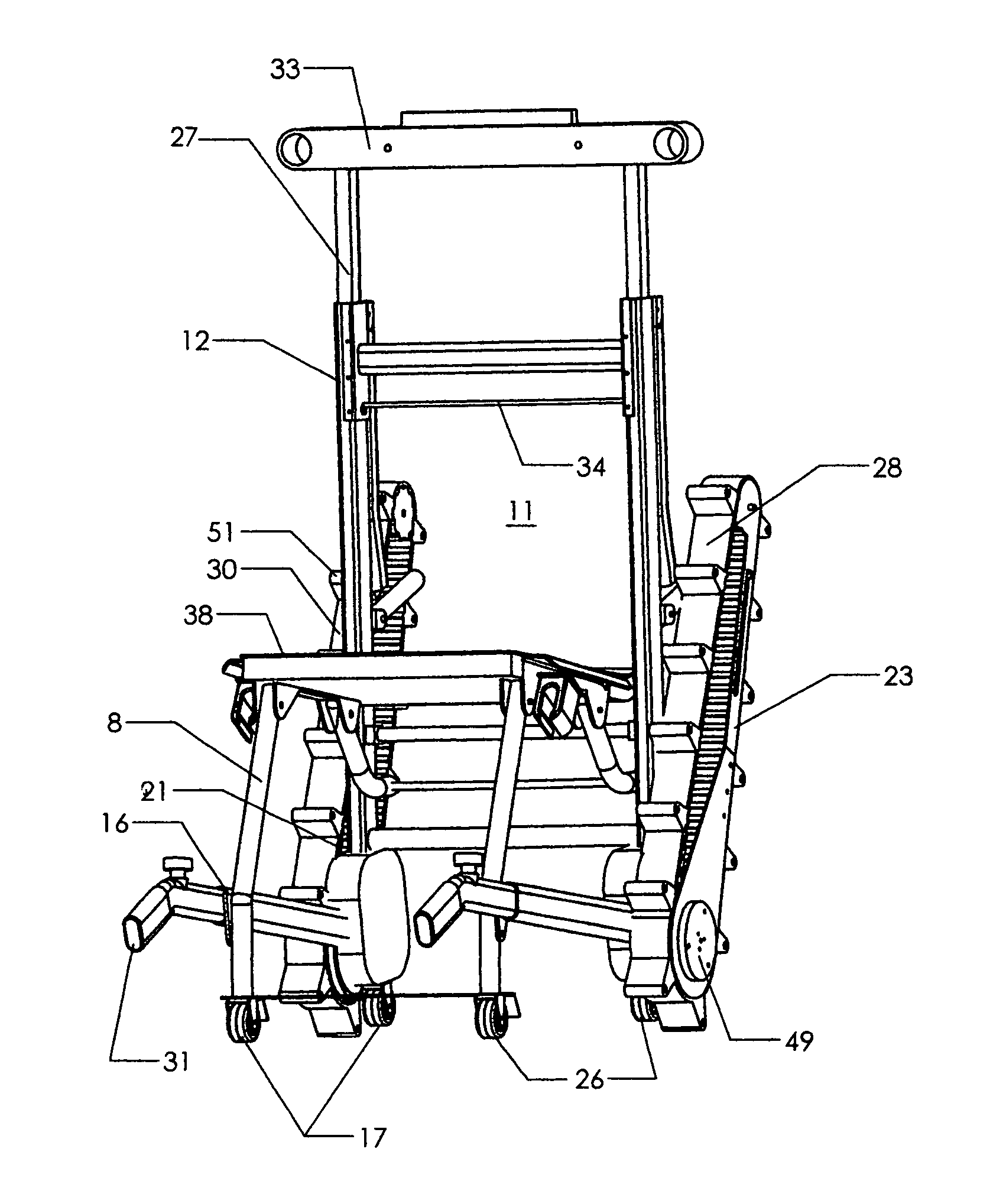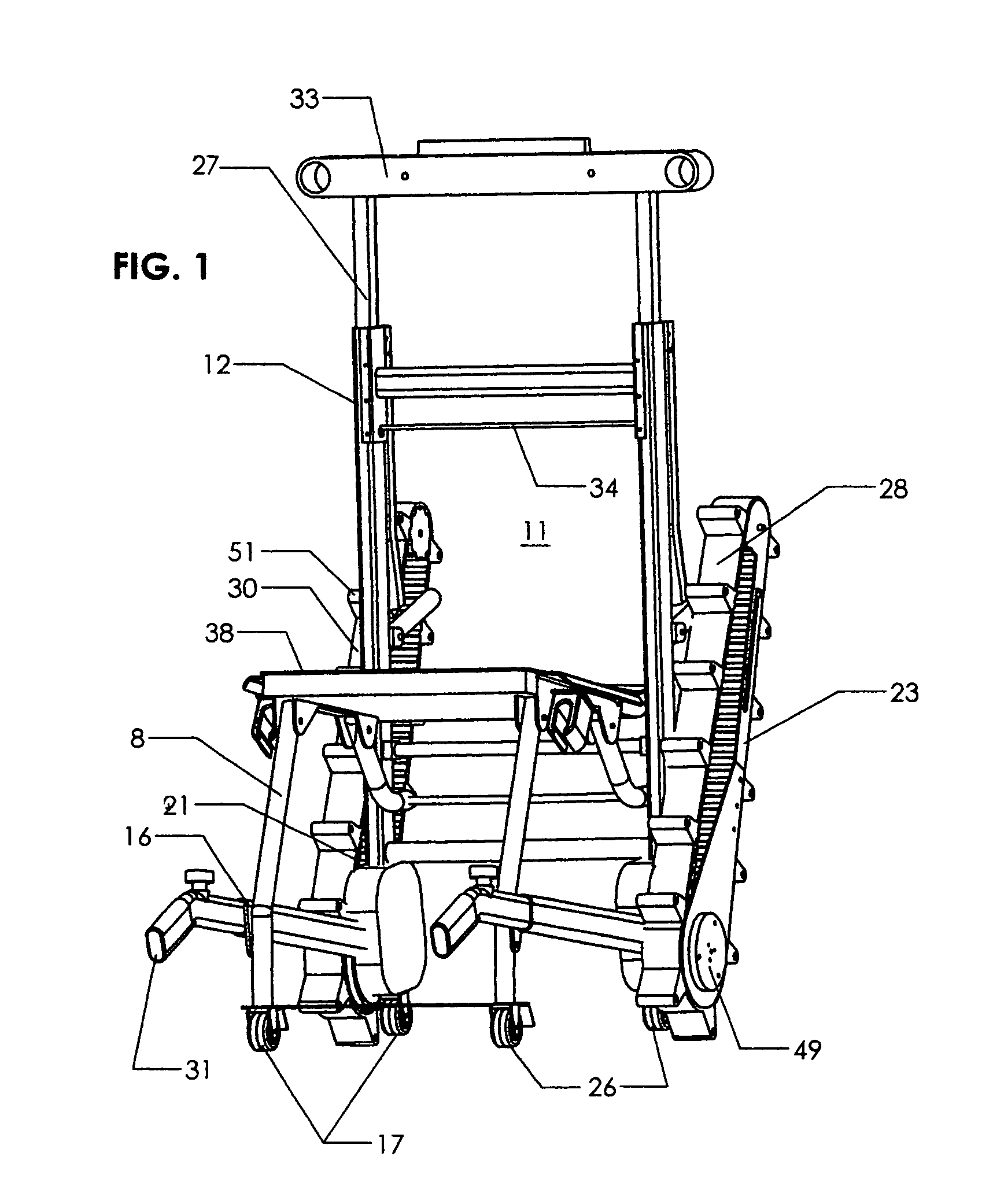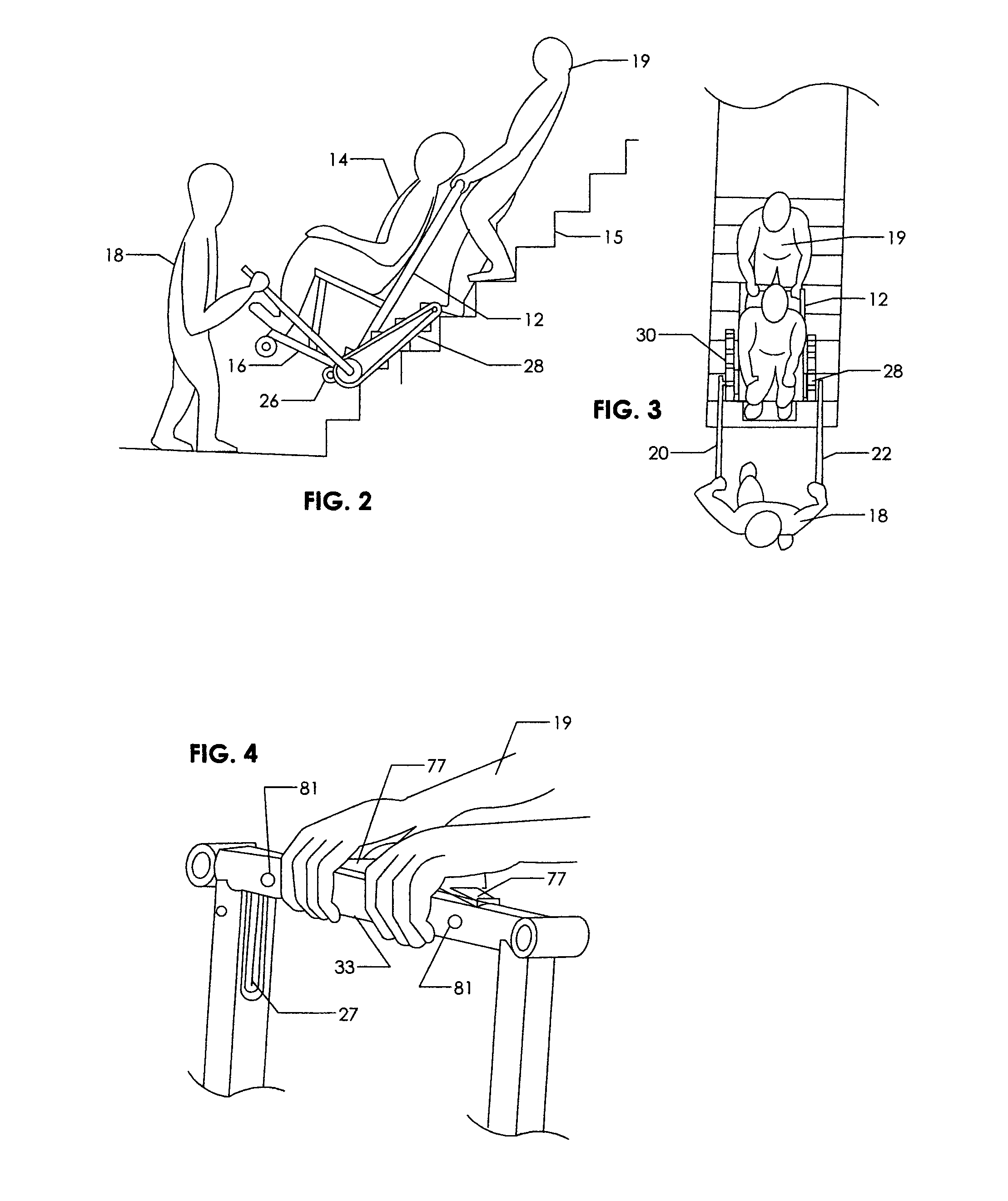Multi function patient transport
a patient and multi-functional technology, applied in the field of multi-functional patient transportation, can solve the problems of increasing obesity in americans, often the most difficult, if not impossible, and the problem may become quite critical, and achieve the effect of being ready to configur
- Summary
- Abstract
- Description
- Claims
- Application Information
AI Technical Summary
Benefits of technology
Problems solved by technology
Method used
Image
Examples
Embodiment Construction
[0026]The invention comprises a transport (transporter) for transporting an injured or disabled person (which person may be quite heavy) from one location to another location. For purposes of this description, the person being transported will be referred to as the “patient” and the attendants doing the transporting will be referred to as EMTs (emergency medical personnel).
[0027]In a preferred embodiment, the transport is shown as chair for transporting a patient in a seated position. In a second embodiment the transport is configured for a medical back board / spine board that is designed to carry a patient in a prone position. Both embodiments shown are utilized by EMTs to manually transport a patient up and down a flight of stairs. The transport is manually operable by at least two attendants, wherein in one embodiment, one of the EMTs manually actuates reciprocating levers to power the chair up the stairs. Significantly, the levers and associated gearing provide a high mechanical ...
PUM
 Login to View More
Login to View More Abstract
Description
Claims
Application Information
 Login to View More
Login to View More - R&D
- Intellectual Property
- Life Sciences
- Materials
- Tech Scout
- Unparalleled Data Quality
- Higher Quality Content
- 60% Fewer Hallucinations
Browse by: Latest US Patents, China's latest patents, Technical Efficacy Thesaurus, Application Domain, Technology Topic, Popular Technical Reports.
© 2025 PatSnap. All rights reserved.Legal|Privacy policy|Modern Slavery Act Transparency Statement|Sitemap|About US| Contact US: help@patsnap.com



